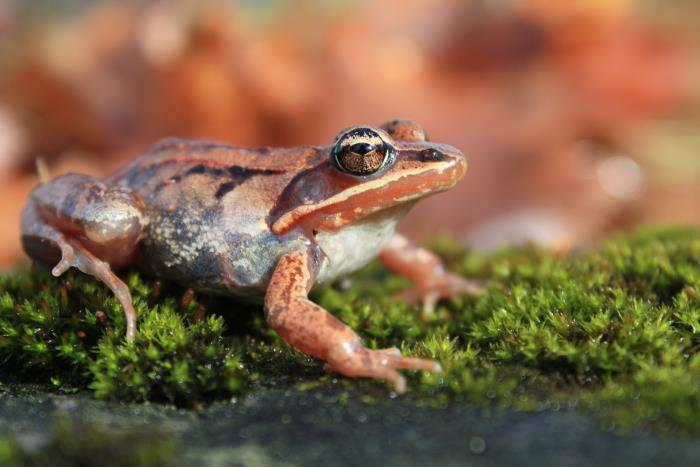In the massive tapestry of the animal country, the genus Acris stands proud for its precise traits and flexibility. Commonly called cricket frogs, participants of this genus are small, sturdy amphibians found generally in the United States. Despite their diminutive size, these frogs play a huge position of their ecosystems, showing charming behaviors and diversifications which have intrigued herpetologists and nature fans alike.
A Brief Overview of Acris
Acris is a genus within the own family Hylidae, which contains a wide variety of tree frogs. However, in contrast to lots of their arboreal spouse and children, cricket frogs are typically terrestrial. There are two number one species inside this genus: Acris crepitans (the northern cricket frog) and Acris gryllus (the southern cricket frog). Both species percentage comparable habitats and behaviors but exhibit moderate differences in their physical look and distribution.
Physical Characteristics and Habitat
Cricket frogs are small, generally measuring between 1.6 to 3.Five centimeters in duration. Their skin is frequently hard and warty, which aids in camouflage. They are typically inexperienced, brown, or grey, with a one of a kind darkish triangle among their eyes and a chain of irregular, dark bands on their legs. These color styles help them combo seamlessly into their environment, shielding them from predators.
These frogs are generally observed close to permanent our bodies of water which includes ponds, lakes, and slow-moving streams. They select areas with abundant plant life, which offers both food and shelter. Their variety extends across a great deal of the japanese United States, from southern New York to Florida and as far west as Texas and Oklahoma.
Behavior and Adaptations
One of the most awesome aspects of Acris is their name. True to their name, cricket frogs produce a rapid, steel clicking sound harking back to the chirping of crickets. This call, generally used by adult males to draw ladies in the course of the breeding season, is each different and exceptionally loud for this kind of small animal. It may be heard from tremendous distances, allowing adult males to establish territories and compete for pals.
Cricket frogs are particularly adaptable and resilient. They are known to live to tell the tale in a whole lot of environmental conditions, from the wet, vegetated edges of water bodies to dry, grassy areas. This adaptability is in part because of their food plan; they are opportunistic feeders, ingesting a wide range of small insects and different invertebrates. This varied weight loss plan facilitates them thrive in distinctive habitats and seasons.
Reproduction and Lifecycle
The breeding season for Acris normally occurs inside the spring and early summer. Males congregate in shallow water and contact to draw ladies. Once a female selects a mate, the pair engages in amplexus, a procedure where the male clasps the girl to fertilize her eggs as she lays them. Females can lay numerous hundred eggs in a single breeding season, attaching them to plants or other submerged gadgets.
The eggs hatch into tadpoles, which are entirely aquatic and undergo a metamorphosis over several weeks to months, relying on environmental conditions. During this variation, they expand limbs and lungs, in the end rising from the water as completely-formed juvenile frogs. This rapid lifecycle lets in Acris populations to get better quickly from adverse conditions, contributing to their resilience.
Ecological Importance
Cricket frogs play a vital function of their ecosystems. As both predators and prey, they may be vital components of the meals web. Their food regimen allows control insect populations, and they, in flip, offer a food supply for loads of animals, which include birds, snakes, and large amphibians.
Moreover, Acris frogs are first-rate bioindicators, which means their presence and fitness can reflect the general circumstance of their surroundings. Because amphibians have permeable pores and skin and spend a part of their lives in water, they’re especially sensitive to modifications in water high-quality, pollutants, and habitat destruction. Monitoring cricket frog populations can for that reason provide treasured insights into the health of aquatic and terrestrial ecosystems.
Conservation Concerns
Despite their adaptability, Acris species face several threats. Habitat loss because of urbanization, agriculture, and climate alternate is a giant situation. Wetlands and different essential habitats are being drained or altered, reducing the to be had habitat for those frogs. Pollution, together with pesticides and business runoff, poses another threat by way of contaminating the water bodies they rely on.
Disease is also a developing subject. The chytrid fungus (Batrachochytrium dendrobatidis) has devastated amphibian populations international, and cricket frogs aren’t immune. This pathogenic fungus influences the pores and skin, impairing the frog’s capability to take in water and electrolytes, often leading to dying.
Efforts and Future Directions
Conservation efforts for Acris frogs include habitat safety and healing, pollution manipulate, and tracking populations for sickness outbreaks. Protecting wetlands and other aquatic habitats is essential, as is implementing buffer zones round these areas to lessen pollutants from agricultural and concrete runoff.
Research is ongoing to understand higher the biology and ecology of Acris frogs, which can tell conservation techniques. For instance, studying their breeding conduct and habitat choices can help create more effective management plans. Public schooling and engagement also are essential. Encouraging nearby groups to take part in citizen technology projects, consisting of frog call surveys, can assist collect precious facts and foster a connection to those small however large creatures.
Conclusion
The genus Acris won’t be as famous as a few other amphibian groups, but its individuals are no less fascinating or essential. Cricket frogs embody the top notch diversity and adaptableness of existence on Earth. By expertise and defensive these tiny amphibians, we can make sure they keep to enrich our ecosystems and offer important ecological services for generations to come back. Their resilience and specific characteristics remind us of the sensitive stability inside herbal habitats and the significance of maintaining biodiversity in all its forms.


